It should be of no surprise that I am once again talking about pineapples. I remember our first attempts at yarding after buying the house. I made a hesitant identification of some spiny, succulent like, grasses planted against the house. Based on a theory that they were pineapples, we moved them. It may have been one of the hardest things we ever did with plant materials. Then they fruited! Now, it seems like pineapples are one of the sure bets in my yard.
So this year, I bring you the seven stages of pineapple. The fruit, that is. The stages of plant would be a whole different thing that, I guess, I should probably get around to documenting as well.
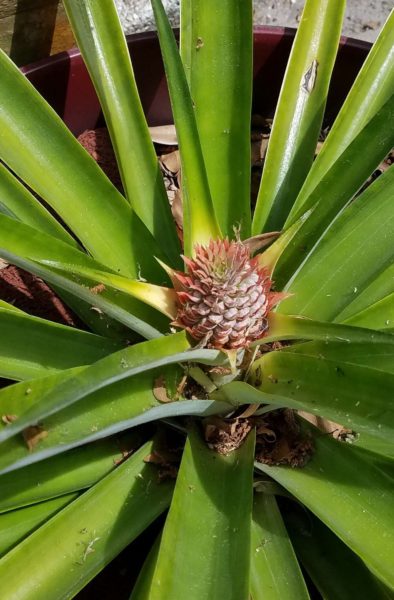
Stage 1
aka this plant is gonna fruit this year. Usually stage one happens around March to May depending on how dry the plants have been over winter.
The flower bud looks like a tiny pinkish proto-pineapple nestled in the whorled center of the plant.
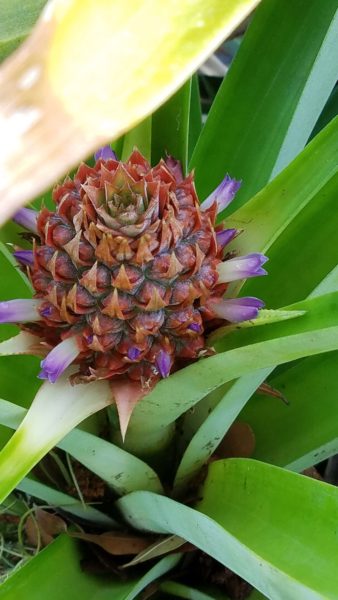
Stage 2
This is where you see actual flowers emerging from the spiny segments of the bud maybe one or two weeks following the initial indication that the plant would fruit. Each flower sets a fruit just like many other fruiting plants. So, each segment is a fruit in its own right, and a pineapple is actually a clustered formation of many smaller fruits.
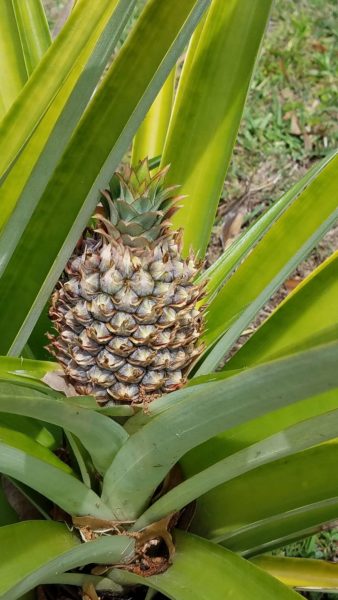
Stage 3
More weeks pass and the emerging pineapple becomes more recognizable. The segments are still very separate, rough, and sharp, but the overall shape of the fruit and leafy top is beginning to form.
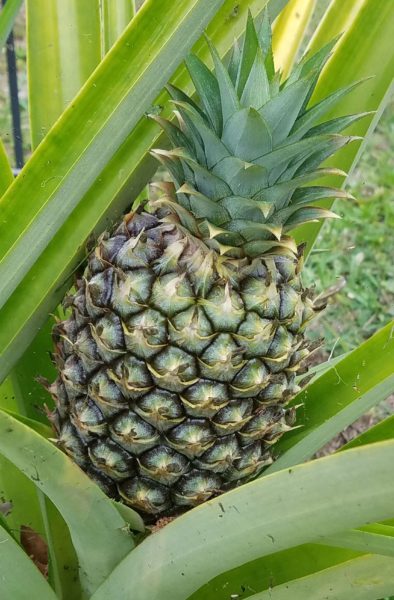
Stage 4
After months, it will seem to you as though nothing is happening, unless you have been photo documenting the fruit’s progress. You can just make out that it is getting bigger, the sections are beginning to flatten and the whole fruit is becoming green.
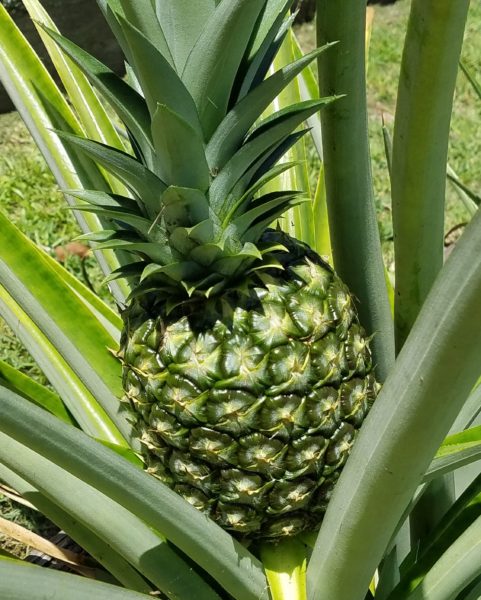
Stage 5
Another month or so, and you will be able to see the individual sections are completely flattened and filled out. It is still green, or, perhaps, more deeply green, and it has no odor to speak of. This will change soon.
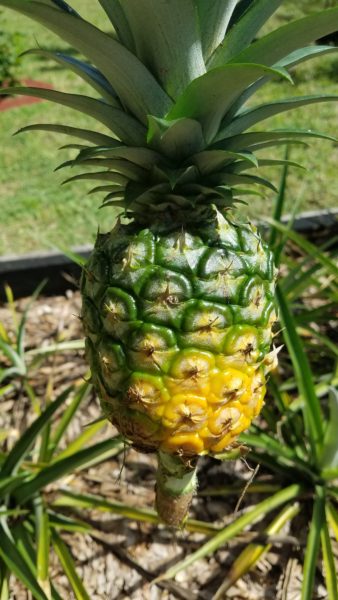
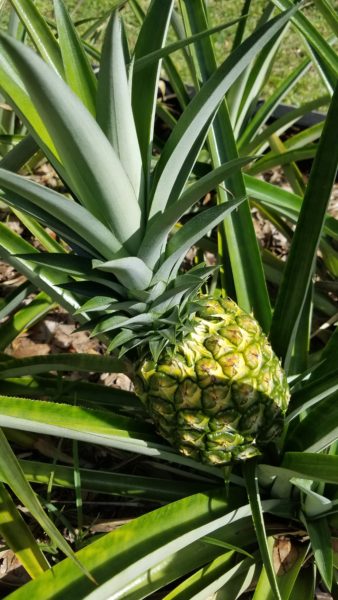
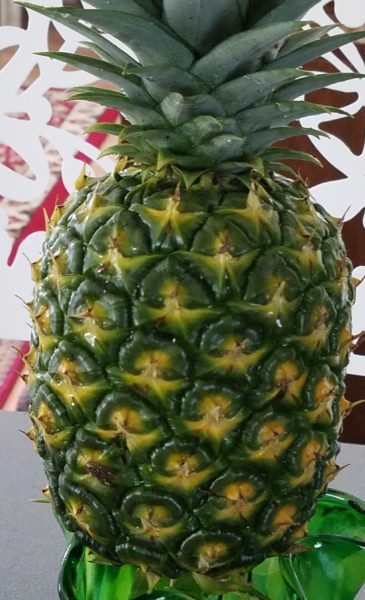
Stage 6
Harvest time! It may seem like weeks and weeks from stage 5, but keep your eyes peeled for the initial signs that it is time to harvest. Ideally, like the image on the left, it would be 1/3 yellow, but you can also harvest slightly before this if the centers of the sections have started turning yellow and you want to guarantee your harvest. I pulled the one in the center because the top side of the fruit was just beginning to get sunburned, as you can see from the pale yellow with orange tints. I also harvested the one to the right as a test to see if there was a too early. I cut the stem holding the pineapple a couple or more inches down and set them up in a vase on the table to finish ripening. Yes, they will.
You can leave the fruit on the plant until fully ripe. However, as the fruit ripens (outside or inside) it will begin to emit a wonderful pineapple-y perfume that many outside critters may find too delectable to resist. I’ve known fellow pineapple growers here in central Florida who have waited eagerly to harvest their fully ripe pineapples only to find them hollowed out by opportunistic raccoons, fruit rats, and ants.
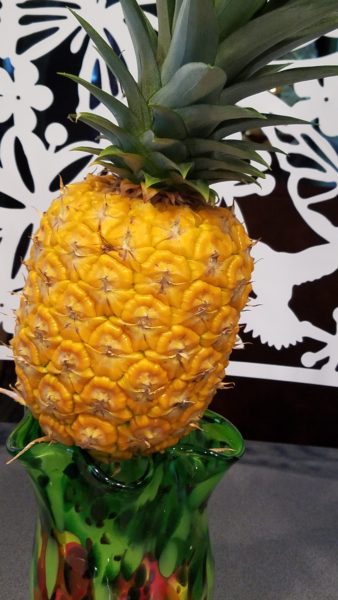
Stage 7
We are now deep in July. After a week and a half on the counter in a vase, the right hand pictured fruit above is totally ripe. As in, cut it up and eat it now, ripe! I could’ve cut it up and eaten before it was quite this yellow, but sometimes the pineapple waits for me and not the other way around.
At this stage of ripeness, I find the fruit tastes like Piña Colada without adding coconut.
There you have it, the seven stages of pineapple fruit in about 5-6 months. Check back for a how-to on carving this beauty!
